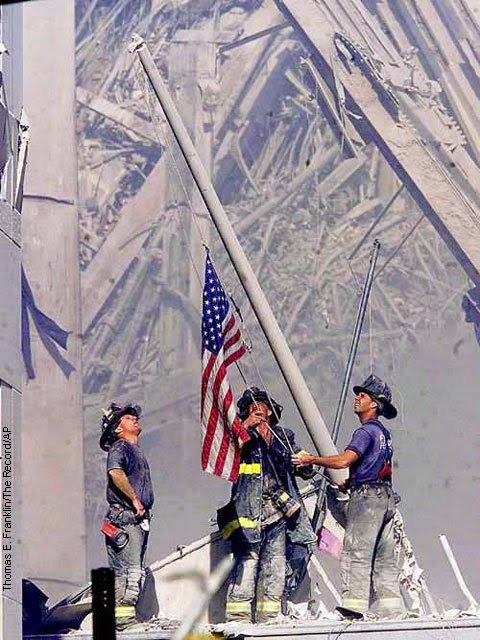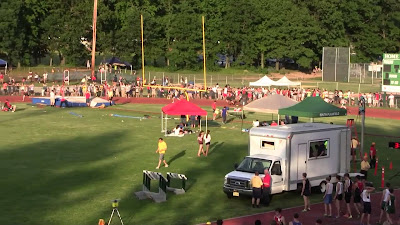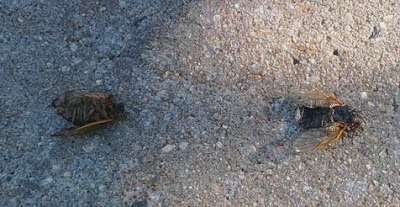Posts Tagged ‘emcomm’
 When All Else Fails or SHTF?
When All Else Fails or SHTF?
 A while back, Dan KB6NU noted the increasing number of preppers getting involved in ham radio. Preppers are people who are actively preparing for emergencies, natural disasters and disruption of social order. In our Technician license course, we’ve noticed an increase in the number of people identifying themselves as preppers.
A while back, Dan KB6NU noted the increasing number of preppers getting involved in ham radio. Preppers are people who are actively preparing for emergencies, natural disasters and disruption of social order. In our Technician license course, we’ve noticed an increase in the number of people identifying themselves as preppers.
Of course, amateur (ham) radio has a long history of emergency service and disaster preparedness. FCC Rules Part 97 says this is one of the purposes of the Amateur Radio Service: Recognition and enhancement of the value of the amateur service to the public as a voluntary noncommercial communication service, particularly with respect to providing emergency communications.
Historically, most radio amateurs approach the hobby from a technical or radio operating point of view, then find ways to apply it to emergency preparedness. The prepper tends to work the equation the other way…starting with the desire to have emergency communication capability and then working to get an amateur radio license.
Many prepper sites just give a quick overview of ham radio, positioning it with GMRS, FRS and CB radio. See Prepper Communications. Articles like this one give a more complete introduction to ham radio: The Skinny On Ham: Getting Licensed. This one, too: Every Prepper Should Be A Ham.
You may run into some creative acronyms on these prepper sites:
SHTF = ”Stuff” Hits The Fan
EOTW = End Of The World
TEOTWAWKI = The End Of The World As We Know It
YOYO – You’re On Your Own
There are web sites devoted to prepping with radio communications:
Prepared Ham
RadioSurvivalist.com
RadioMaster Reports
Many of these sites have useful information that may stretch your thinking on “being prepared.” Of course, some of these prepper sites (not the ones listed above) are a bit over the top and may have resulted from people going off their meds. Draw your own conclusions.
I’ve noticed a pattern of people creating prepper frequency lists, such as the one shown below. (Note that some of the ham frequencies listed do not conform to generally accepted band plans.) I can see the usefulness of having some assigned frequencies but its not clear to me how they’ll actually get used. I think the challenge for new prepper hams is to think through who they are going to communicate with and for what purpose. It’s also important to get familiar with the equipment and gain experience on the air, so when the EOTW happens you aren’t sitting there reading the radio manual.
Whether you think of emergency communications as “When All Else Fails” or when SHTF, amateur radio is a resilient communication tool.
73, Bob K0NR
Added 7 Dec 2013: I came across this video that does a good job of introducing ham radio to the prepper crowd: So you want a ham radio for emergency communications!
 A Great Bag for the FT-817
A Great Bag for the FT-817
One of my favorite rigs is the Yaesu FT-817, the QRP transceiver that covers HF through 70 cm. I use it for mountaintop VHF, including Summits On The Air (SOTA) activations.
At Pacificon, I came across this bag by AMP-3 which is custom designed for the FT-817. David KF7ETX did a great job designing this bag, which he explains in this video.
There are cheaper solutions out there but this is the best one I’ve seen.
73, Bob K0NR
 FCC Considers Encryption on Amateur Bands
FCC Considers Encryption on Amateur Bands
 Just when things were terminally boring on the amateur radio regulatory front, the ARRL reports that “The FCC is inviting public comments on a proposal from a Massachusetts ham to amend the Part 97 Amateur Service rules to permit the encryption of certain amateur communications during emergency operations or related training exercises.” The FCC is seeking comments on the Petition for Rulemaking RM-11699, submitted by Don Rolph (AB1PH). My email and twitter feed started filling up with passionate pleas to either support this petition or to kill it.
Just when things were terminally boring on the amateur radio regulatory front, the ARRL reports that “The FCC is inviting public comments on a proposal from a Massachusetts ham to amend the Part 97 Amateur Service rules to permit the encryption of certain amateur communications during emergency operations or related training exercises.” The FCC is seeking comments on the Petition for Rulemaking RM-11699, submitted by Don Rolph (AB1PH). My email and twitter feed started filling up with passionate pleas to either support this petition or to kill it.
This idea has been around for a while but I don’t recall the FCC considering action on it. The issue is that “messages encoded for the purpose of obscuring their meaning” are prohibited by Part 97 rules for the Amateur Radio Service. (Actually, that is not completely true since an exception exists for control of stations in space and radio-controlled models.) This rule has a very important role in enabling the “self policing nature” of the amateur radio service. That is, everyone can listen to the content of all radio communications, allowing improper use of the spectrum to be exposed. (Note to self: file a petition to require encryption when using 14.313 MHz.)
This rule can be a barrier when ham radio Emcomm organizations are providing communications for served agencies (e.g., the Red Cross, fire departments, medical response, law enforcement, etc.) These served agencies do not want sensitive information passed over the radio “in the clear.” Sensitive information includes items such as medical/patient information, location of emergency responders and supplies, damage assessments, door or gate access codes, etc.
A few weeks ago, I volunteered my time to help with communications for the Black Forest wildfire here in Colorado. So count me as someone that sees emergency communications as a key part of amateur radio. (Gosh, I think Part 97 even mentions this. See Part 97.1a) I also see that the prohibition against encryption is a does get in the way during some incidents.
But I am also worried about opening the door to significant use of encryption on the ham bands. The problem with encrypted messages is that…wait for it…you can’t decode the messages. So how do we maintain that self-policing thing? The fear seems to be that if we open the door at all to encryption, it will enable virtually anyone (amateur license or not) to transmit encrypted messages for unknown and inappropriate purposes.
The challenge is to figure out what limits could be put on encrypted operation to retain the self-policing nature of ham radio while enabling more effective emergency communications. Here are some ideas:
- Limit the use of encryption to actual emergencies and training exercises. (This is already in RM-11699.)
- Require that radio transmissions are properly identified “in the clear”, with no encryption. That way if encryption is used on a regular basis, steps can be taken to investigate further. (This may already be assumed by RM-11699 but I did not see an explicit statement.)
- Require additional information to be sent in the clear with the station ID when sending encrypted messages. For example, the name of the served agency, the nature of the emergency or drill, or anything else that would help a random listener to judge whether it is an appropriate use of encryption.
- Require archiving of encrypted messages (in unencrypted form) for some period time, available for FCC inspection.
- [Added 28 June]: Avoid international regulation issues by limiting encrypted messages to US stations only.
- <insert your idea here>
Still pondering this issue…what do you think?
73, Bob K0NR
Update 1 July 2013: See the article by Bruce Perens K6BP
Update 8 July 2013: See comments by N5FDL
The ARRL says “no”.
 Peoples is crazy!
Peoples is crazy!
When I was a kid, I vaguely remember a comedian on TV, who would say in a thick, mock German accent, “Peoples is crazy!” or something very similar to that. That line kept running through my mind tonight as I volunteered as a CERT member for South Plainfield Emergency Management at the South Plainfield High School graduation ceremony, held at the football field.
We provided a whole bunch of services. We directed people to parking spots, and as it was a hot day – we handed out cold bottled water to anyone who desired it, we provided “a presence” and kept our eyes peeled for anyone who looked like they might get ill or faint, or might otherwise need assistance.
By the end of the ceremony, 260 high school grads received their diplomas after many speeches, much cheering and screaming and hoopla.
The best came at the end of the night, though, as dusk was falling and the near full moon started to rise. On three separate occasions, I kept spectators from jumping over the chain link fence and running onto the football field to greet their graduates. In each case, I’m not talking about kids here. I am referring to older “Dad types” who should have known better than to attempt such a stunt. On each occasion, as the improbable was about to be tried, I simply but firmly stated, “Please go around to the gate and don’t jump over the fence.” The first two guys said nothing – and just complied.
The third guy? Oh, he was a good one. A rather snarky “And why should I listen to you?” was what I got for my request. Rather than argue, I just very politely asked, “Sir, do you really want your son or daughter to remember their high school graduation night as the time that Dad had to go to the Emergency Room to get stitches in his leg after he cut it while trying to jump the football field fence?” He looked at me, thought about it for half a second and went around to the gate.
Peoples is crazy!
72 de Larry W2LJ
QRP – When you care to send the very least!
Follow up – Saw my fence jumper today at the A&P – yep, the third guy. While I was shopping, he tapped me on the shoulder, shook my hand, and thanked me for preventing him from doing something “potentially very stupid”, as he put it. Sometimes it’s all worth it.
 Trying a new template.
Trying a new template.
Not sure I like it; or will keep it, but it IS different from what I had. Is this template easier on the eyes? Some folks recently and privately commented to me that they didn’t like a white typeface against a dark background. Is this any better?
I joined my CERT group to aid South Plainfield with the running of the Holy Savior Academy 5K walk/run this morning. Luckily, I only had one obnoxious driver to deal with who couldn’t understand that the main roads were closed so that people wouldn’t be run over. “You actually expect me to park on this side street and walk a block to my house?”, I was asked. “Yes, sir”, I replied, “It’s for your protection as well as theirs.” He still huffed and puffed until he started getting unreasonable and a little belligerent, so at that point, I radioed for police assistance. They arrived and suddenly the light bulb went on over his noggin – he got the idea.
The thing that gets me is that not only is this an annual event; but it’s also very well publicized. Notice about it appears on the local cable channel. Sacred Heart Church, which loans out its parking lot for the epicenter of the event is by far the largest church in town. The notices for the “Family 5K Run/Walk” appears in their bulletin for weeks ahead of time. The local town paper published the details about the run/walk and the road closures the week before the event, also. The town puts it on their Website and their Facebook page. Don’t people read? Several of our CERT members suggested to our Director of Emergency Management that perhaps next year, on the night before the event, that we do an automated “reverse 911” call and telephone all the houses anywhere near the route that the roads will be closed. Oh, and by the way, the roads are closed for all of about an hour – 90 minutes tops!
One of my Ham buddies, Marv K2VHW, who also lives in South Plainfield was at the event with me. He told me that his rain gauge had close to 4.5 inches (11 cm) of rain in it due to yesterday’s visit from Tropical Storm Andrea. Yesterday was definitely a soaker, and I’m willing to bet the cicadas weren’t too thrilled with it. I know that the tropical storm season does officially start with the end of May. I don’t recall us ever getting a visit by a named storm so early in the season. I hope it’s not a portent for things to come. Irene in 2011 and Sandy in 2012 were enough for me for a long, long time.
 A Simple Wilderness Protocol: 146.52 MHz
A Simple Wilderness Protocol: 146.52 MHz
 “The Wilderness Protocol” (ref. June 1996 QST, page 85), recommends that stations (fixed, portable or mobile) monitor the primary (and secondary if possible) frequency(s) every three hours starting at 7 AM local time, for five minutes (7:00-7:05 AM, 10:00-10:05 AM, etc.) Additionally, stations that have sufficient power resources should monitor for five minutes starting at the top of every hour, or even continuously.” The primary frequency is the National Simplex Calling Frequency…146.52 MHz. The secondary frequencies are 446.0, 223.5, 52.525 and 1294.5 MHz.
“The Wilderness Protocol” (ref. June 1996 QST, page 85), recommends that stations (fixed, portable or mobile) monitor the primary (and secondary if possible) frequency(s) every three hours starting at 7 AM local time, for five minutes (7:00-7:05 AM, 10:00-10:05 AM, etc.) Additionally, stations that have sufficient power resources should monitor for five minutes starting at the top of every hour, or even continuously.” The primary frequency is the National Simplex Calling Frequency…146.52 MHz. The secondary frequencies are 446.0, 223.5, 52.525 and 1294.5 MHz.
Here in Colorado, the summer months mean that many people head for the mountains. Mobile phone coverage has improved in many parts of the high country but is still not reliable in all areas. Amateur radio VHF/UHF repeater coverage is extensive but also does not cover the entire state.
The Wilderness Protocol is a good idea but is overly complex for practical use. Here’s my proposal to make it much simpler for practical backcountry use:
Principle #1: Don’t ever rely on a radio or mobile phone to get you out of trouble in the backcountry. Your primary strategy must be self-sufficiency. Avoid trouble. Be prepared for the unexpected.
Principle #2: Know what repeaters are available in your area. We have many wide coverage repeaters available but you need to know the frequency, offset and CTCSS tone (if any). The Colorado Connection is a linked repeater system that covers many remote parts of the state.
Principle #3: In remote areas, monitor 146.52 MHz as much as possible. This applies to backcountry travelers, mobile stations and fixed stations.
I’ve been making it a habit to monitor 146.52 MHz in the backcountry. I often come across hikers, campers, fisherman, 4WD enthusiasts, SOTA stations, mobile operators and others monitoring that frequency. It is fun to chat with other radio amateurs having fun in the mountains.
Just my opinion.
73, Bob K0NR
Note: This is a repost of an older article with minor edits.

















